Columbia, MO Pollen and Allergy Report for Summer 2023
Pollen Allergy Trends in Columbia, MO
When is pollen lowest in Columbia, MO?

February
Lowest month total PPM
Avg. PPM
When is pollen highest in Columbia, MO?

April
Highest month total PPM
Avg. PPM
How does pollen in Columbia, MO compare to Missouri?
Columbia has a lower average PPM than the state of Missouri.
Columbia yearly avg PPM:
Missouri yearly avg PPM:
How does pollen in Columbia, MO compare to the USA?
Columbia has a higher average PPM than the USA.
Columbia yearly avg PPM:
USA yearly avg PPM:
Is pollen worse this year in Columbia, MO?
Spring 2023 was worse than spring 2022.
Spring 2023 PPM:
Spring 2022 PPM:
Average PPM in Columbia, MO
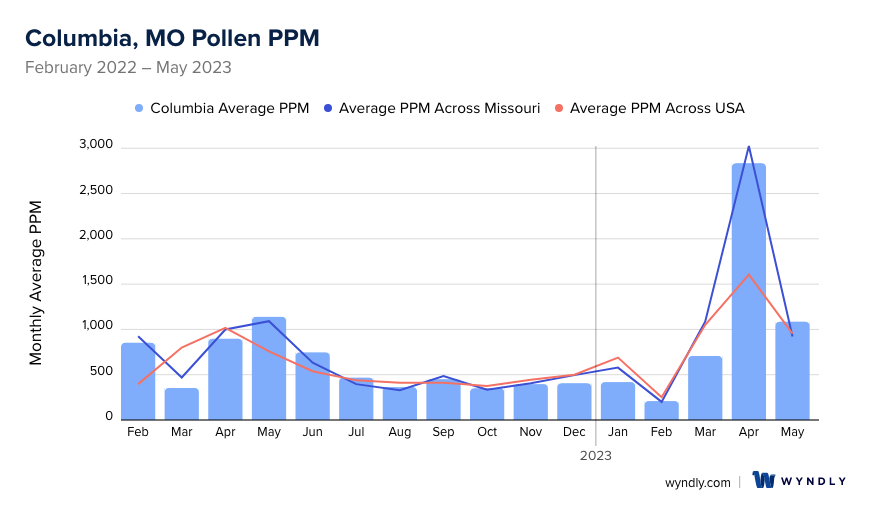
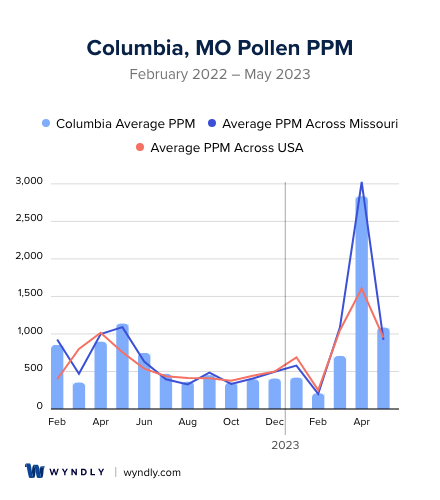
Columbia, MO Pollen and Allergy Breakdown by Month
Grass
When is grass pollen highest in Columbia, MO?
February has the highest grass pollen in Columbia, MO with an average PPM of
When is grass pollen lowest in Columbia, MO?
October has the lowest grass pollen in Columbia, MO with an average PPM of
Tree
When is tree pollen highest in Columbia, MO?
April has the highest tree pollen in Columbia, MO with an average PPM of
When is tree pollen lowest in Columbia, MO?
September has the lowest tree pollen in Columbia, MO with an average PPM of
Weed
When is weed pollen highest in Columbia, MO?
April has the highest weed pollen in Columbia, MO with an average PPM of
When is weed pollen lowest in Columbia, MO?
February has the lowest weed pollen in Columbia, MO with an average PPM of
Columbia, MO Pollen Monthly Breakdown by Pollen Type
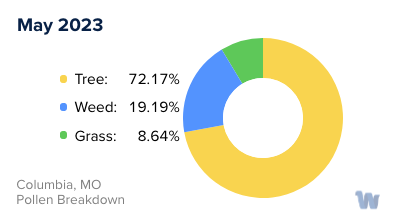
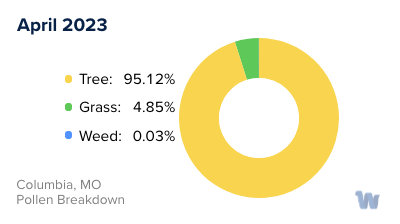
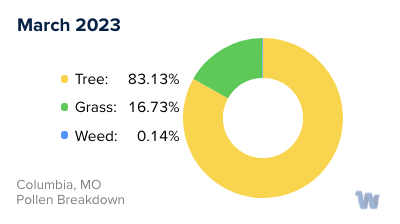




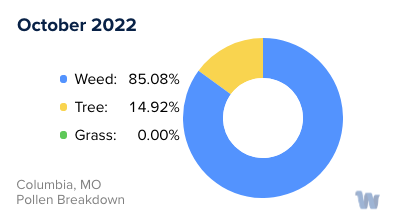

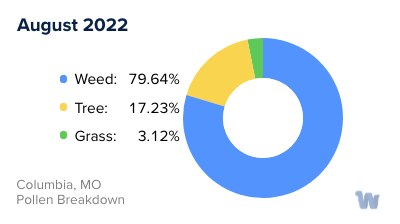
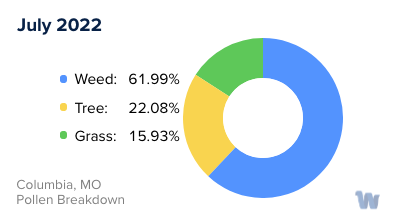

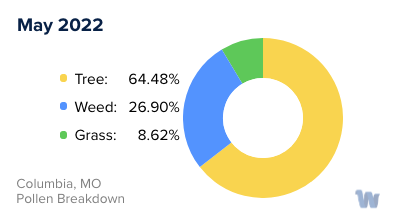
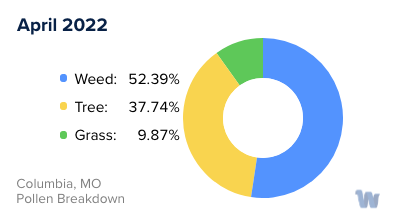


Pollen and Hay Fever in Columbia, MO
When the magnolias and oaks of Columbia, Missouri begin to bloom, a wave of vibrant colors and fragrant scents fills the air. While this is a beautiful sight, for some residents, it signals the beginning of allergy season. Among the different types of allergies, pollen allergies, commonly known as hay fever, are one of the most prevalent in this region.
The city's rich and diverse flora make it a haven for pollen producers. The main types of pollen that lead to hay fever in Columbia are from trees, grasses, and weeds. Each of these plant types has a specific season when it releases pollen into the air, which can lead to a runny nose, itchy eyes, and sneezing for those with pollen allergies.
Tree pollen is typically the first to hit the air as spring approaches. In Columbia, oak, hickory, and cedar trees are among the most significant contributors. Their pollen season usually starts in late February or early March and continues through to June.
As spring transitions into summer, grasses become the main culprits. Timothy grass, Kentucky bluegrass, and ryegrass are common in the area and start releasing their pollen in May, continuing until late July.
Finally, as summer fades into fall, weeds begin to release their pollen. Ragweed, the most common type of weed pollen, begins its season in late August and continues until the first frost, usually in November.
Living in Columbia, Missouri, means experiencing all four seasons, each with its unique charm. However, for those susceptible, each season also carries a different pollen type that might cause hay fever. Understanding the types of pollen and their seasons can help residents anticipate and prepare for these periods, ensuring they can enjoy the beauty of each season while managing their symptoms.

